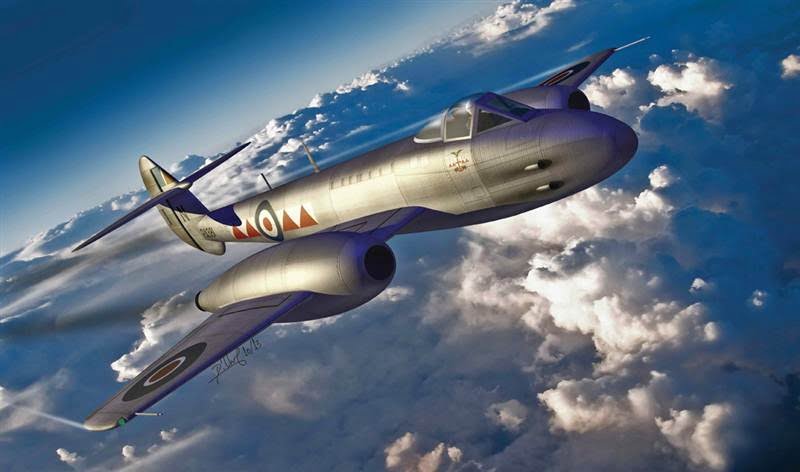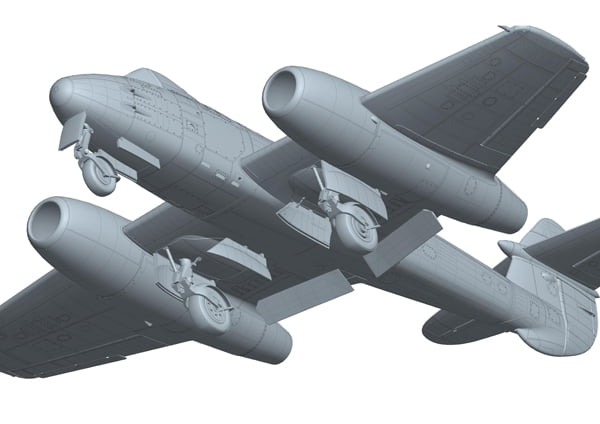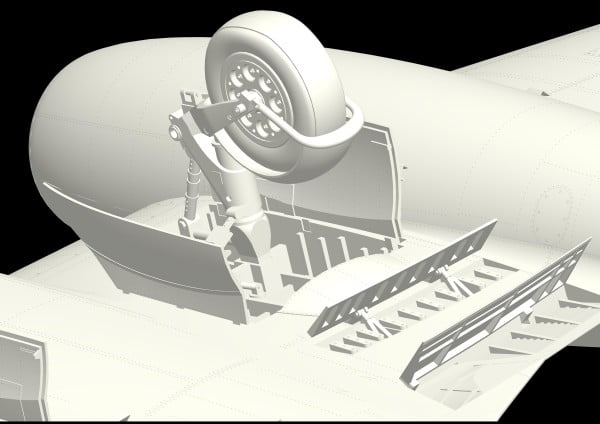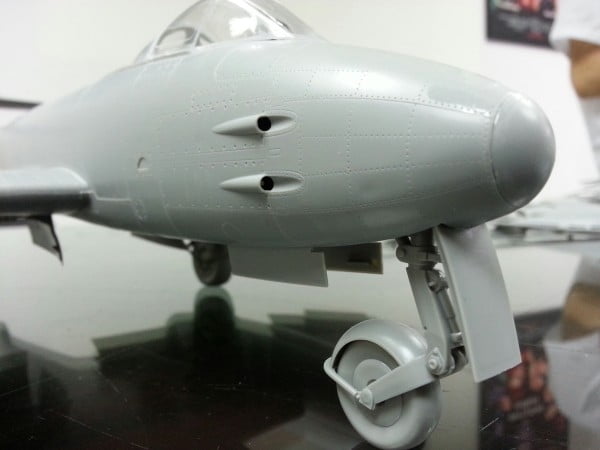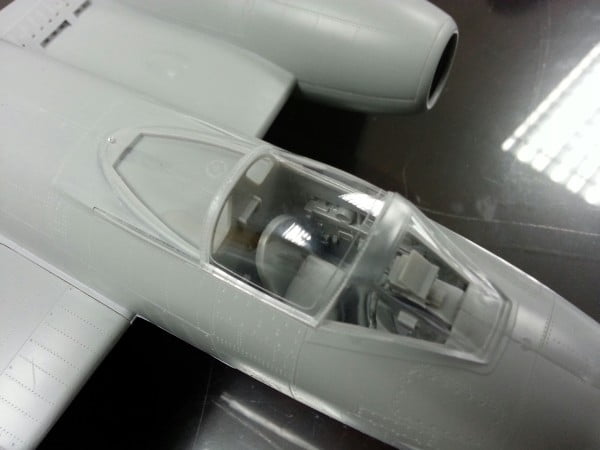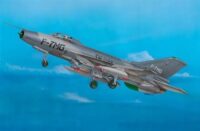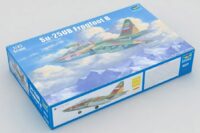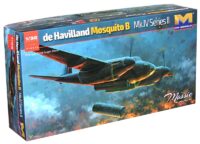Gloster Meteor F.4 1/32
€90.00
Gloster Meteor F.4 1/32
2 in stock
- Satisfaction Guaranteed
- No Hassle Refunds
- Secure Payments
Description
Gloster Meteor F.4 1:32 HK Models Kit
The Gloster Meteor was the first British jet fighter and the Allies’ only operational jet aircraft during the Second World War. The Meteor’s development was heavily reliant on its ground-breaking turbojet engines, pioneered by Sir Frank Whittle and his company, Power Jets Ltd. Development of the aircraft itself began in 1940, although work on the engines had been under way since 1936. The Meteor first flew in 1943 and commenced operations on 27 July 1944 with No. 616 Squadron RAF. Nicknamed the “Meatbox”, the Meteor was not a sophisticated aircraft in its aerodynamics, but proved to be a successful combat fighter.
Several major variants of the Meteor incorporated technological advances during the 1940s and 1950s. Thousands of Meteors were built to fly with the RAF and other air forces and remained in use for several decades. The Meteor saw limited action in the Second World War. Meteors of the Royal Australian Air Force (RAAF) provided a significant contribution in the Korean War. Several other operators such as Argentina, Egypt and Israel flew Meteors in later regional conflicts. Specialised variants of the Meteor were developed for use in photographic aerial reconnaissance and as night fighters.
The Meteor was also used for research and development purposes and to break several aviation records. On 7 November 1945, the first official air speed record by a jet aircraft was set by a Meteor F.3 of 606 miles per hour (975 km/h). In 1946, this record was broken when a Meteor F.4 reached a speed of 616 mph (991 km/h). Other performance-related records were broken in categories including flight time endurance, rate of climb, and speed. On 20 September 1945, a heavily modified Meteor I, powered by two Rolls-Royce Trent turbine engines driving propellers, became the first turboprop aircraft to fly. On 10 February 1954, a specially adapted Meteor F.8, the “Meteor Prone Pilot”, which placed the pilot into a prone position to counteract inertial forces, took its first flight.
In the 1950s, the Meteor became increasingly obsolete as more nations introduced jet fighters, many of these newcomers having adopted a swept wing instead of the Meteor’s conventional straight wing; in RAF service, the Meteor was replaced by newer types such as the Hawker Hunter and Gloster Javelin. As of 2013, two Meteors, WL419 and WA638, remain in active service with the Martin-Baker company as ejection seat testbeds. Two further aircraft in the UK remain airworthy, as does another in Australia.
| Gloster Meteor F. 4 | ||||||||||||||
| The Gloster Meteor – the first British jet fighter and the Allies’ first operational Jet. | ||||||||||||||
The Meteor’s development was based on its ground-breaking turbojet engines, which was a joint collaboration between the Gloster Aircraft Company and Sir Frank Whittle and his company, Power Jets Ltd. The Meteor was initially used to counter the V-1 German flying bomb threat; total 14 flying bombs were accounted by the war’s end. Meteor might not an aerodynamically advanced aircraft but it proved to be an effective and a successful combat fighter. Thousands of Meteors were built to serve in the RAF and other air forces. It was service during the Korean War, Argentina, French Air Force, and Israeli, | ||||||||||||||
| In 1945, two Meteors were modified for World air speed record, Group Captain H.J Wilson create the first official air speed record by jet aircraft of 975km/h. | ||||||||||||||
|
| Plastic model assembly kit, requires paint and glue. |
Additional information
| Weight | 7 kg |
|---|

